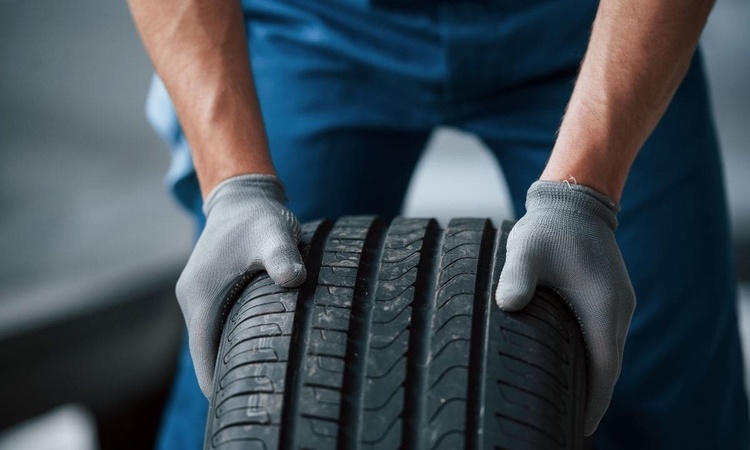Choosing the Right Tires for Your Driving Conditions
Selecting tires that match your driving environment improves safety, handling, and efficiency. This article outlines how inspection, pressure management, and maintenance factor into tire choice, and explains considerations for hybrid vehicles, braking performance, and everyday comfort.

Choosing tires that match your driving conditions makes a measurable difference in safety and vehicle performance. Tires are the only contact between a vehicle and the road, so they influence handling, braking distance, ride comfort, and energy use. Regular inspection and proper pressure are fundamental maintenance tasks that extend tire life and preserve efficiency. This article explains practical factors to consider when selecting tires, how they relate to other vehicle systems such as brakes and battery in electrified cars, and routine diagnostics to keep driving predictable.
How do maintenance and inspection affect tire life?
Routine maintenance and inspection are key to getting expected wear from tires. Check tread depth, look for irregular wear patterns, and inspect sidewalls for cuts or bulges. Rotation schedules recommended by manufacturers help distribute wear evenly and support predictable handling. Alignment and suspension checks during inspections prevent edge wear that reduces traction. Proper pressure management—checked monthly and before long trips—supports even wear, fuel efficiency, and safety. For drivers using local services in your area, ask technicians to include a tire inspection in routine maintenance visits so tires remain safe and perform as intended.
What safety and handling roles do tires play?
Tires directly affect safety through traction and handling characteristics. The tread pattern, rubber compound, and construction determine grip on wet, dry, or loose surfaces. Tires designed for improved wet braking reduce stopping distances, which complements the vehicle’s braking system; worn or mismatched tires can increase braking distances regardless of brake condition. Handling is influenced by sidewall stiffness and tread design: sturdier sidewalls can improve cornering response, while softer compounds may enhance grip at the expense of longevity. Select tires that match typical driving conditions—urban commuting, highway mileage, or occasional snow—to balance safety and handling.
How does pressure and diagnostics influence performance?
Tire pressure affects rolling resistance, contact patch size, and heat buildup. Underinflation increases wear on shoulders, reduces fuel efficiency, and can cause overheating that risks failure. Overinflation reduces the contact area, weakening traction and making the ride harsher. Use recommended pressure values from the vehicle placard and adjust for load and driving speed. Modern vehicles may include tire pressure monitoring systems as part of diagnostics; ensure the system is functioning and, if your vehicle supports it, have diagnostics checked during service intervals. Proper pressure maintenance supports consistent handling and maximizes efficiency.
Are there tire considerations for hybrid and efficiency-focused vehicles?
Hybrid and efficiency-focused vehicles often benefit from tires engineered to lower rolling resistance without sacrificing traction. These tires can improve fuel economy or extend electric range while maintaining acceptable ride quality. However, low-rolling-resistance tires may have different wear patterns or reduced wet traction compared with performance-focused options, so balance efficiency goals with safety needs for your driving conditions. For electrified vehicles, consider how tire choices interact with battery weight and regenerative braking: heavier battery packs can accelerate wear and slightly alter handling, so inspection frequency may need to be increased compared with lighter vehicles.
How do tires relate to brakes, lighting, and cabin comfort?
Tires are a component of overall vehicle performance that interacts with brakes and other systems. Good tires improve braking performance by providing consistent grip under braking loads, while uneven or worn tires can compromise stopping distances even if brake components and pads are in good condition. Tire selection and condition also influence ride comfort and cabin noise; some tread patterns are engineered to reduce road noise that transfers into the cabin. While lighting does not directly affect tire function, maintaining full diagnostics for vehicle systems ensures coordinated performance—combining tire inspection with a check of brakes, lighting, and on-board diagnostics during service visits creates a more comprehensive safety approach.
Choosing a tire involves weighing factors such as expected weather, typical road surfaces, mileage goals, and performance needs. Consider seasonal tires for regions with significant snow or ice, and all-season or touring tires for mainly dry and wet conditions. Match tire size and speed/load ratings to manufacturer recommendations to preserve handling and safety margins. Keep records of inspections, rotations, and pressure checks to track wear trends and detect issues early.
Conclusion
Selecting the right tires for your driving conditions requires a combination of regular inspection, correct pressure maintenance, and matching tire characteristics to how and where you drive. Tires affect braking performance, handling, cabin comfort, and efficiency, and choices can be especially relevant for hybrid or electric vehicles because of weight and range considerations. Regular maintenance—alongside diagnostics for related systems like brakes and tire pressure monitoring—helps maintain predictable performance and extends tire life. Thoughtful selection and ongoing care produce safer, more efficient driving across diverse conditions.





